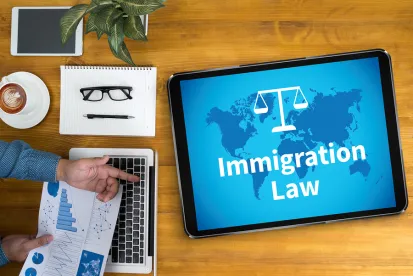April 1st is quickly approaching and that means H-1B season is upon us. The H-1B visa is available to companies wishing to hire a foreign worker to fill a “specialty occupation” defined by regulation as a position that requires “(a) theoretical and practical application of a body of highly specialized knowledge, and (b) attainment of a bachelor’s or higher degree in the specific specialty (or its equivalent) as a minimum for entry into the occupation in the United States.” INA § 214(i)(1)
Given the proposed changes to the H-1B cap process at USCIS and the uncertainty with the timing and implementation of the rule, employers should be working now to identify the workers that require H-1B sponsorship.
Suggestions for employers
-
Review hiring needs and current employment rosters to identify those employees who will need H-1B work authorization for continued employment.
-
Identify employees who are currently employed on F-1 OPT or CPT authorization, or other classification (such as L-1, TN, H-4 EAD) and determine if the company intends to employ them beyond the current work authorization expiration.
-
Determine anticipated job titles, job duties, work location and rate of pay.
-
Notify your immigration attorney with the list of employees the company wishes to sponsor for evaluation of qualifications for H-1B status.
The proposed regulatory changes to the H-1B process have moved out of the notice and comment period and the final version of the rule is under review at the Office of Management and Budget, with the expectation that the final rule will be issued prior to April 1, 2019. However, it is not yet determined if the regulatory changes will be implemented for the upcoming cap filing season or delayed until next filing season.
Whether or not the changes to the H-1B rule are implemented this year or next, employers can expect demand for these valuable visas to continue. H-1B regulations currently allow for an annual allotment of 65,000 H-1B petitions along with an additional 20,000 for advanced degree professionals who have earned a U.S. Master’s degree or higher. In the past few filing years, the number of H-1B cap petitions received by USCIS has far exceeded the annual allotment. Therefore, it is critical for employers to be ready for filing for April 1, the first available day to submit H-1B petitions for the fiscal year. Despite possible changes to the filing system, employers should be prepared for the H-1B season early to ensure maximum opportunity for H-1B visas.



 />i
/>i

